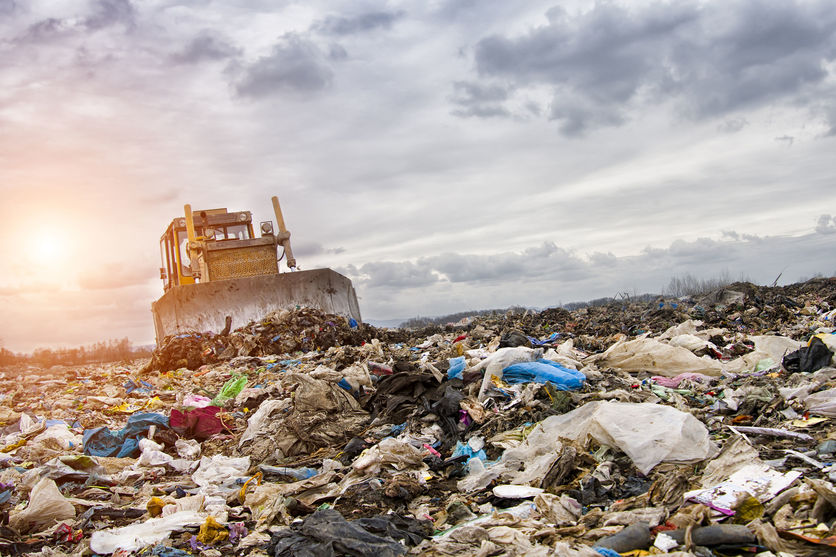What Is A Landfill?
Commonly known as a dump, the landfill is the official term for a facility where garbage is discarded. This location serves as a landfill where virtually anything can be discarded. Although hazardous waste & nuclear waste are less likely to be found in landfills than industrial and household trash, they exist.
Depending on the scale, these facilities may be controlled by hand or electromagnetics. Fences are commonly installed around landfills to prevent unwanted visitors from entering and possibly posing a safety or environmental risk. Landfills provide a valuable resource for communities when other options for obtaining necessities are exhausted. For instance, minerals recovered from a dump might be repurposed for construction.
Locations of Louisiana landfills
Woolworth Road Landfill – 10580 Woolworth Rd, Keithville, LA 71047
The Woolworth Road Landfill is located at 10580 Woolworth Road, Keithville, LA, 71047.
There is a 435-acre landfill called the Woolworth Highway Landfill in Keithville, Louisiana, roughly a quarter mile west of Woolworth Highway between Buncombe & Colquitt Roads. Shreveport, Caddo Parish, Bossier City, and Bossier Parish may all expect to meet their needs by the facility by 2022.
DeSoto Parish Landfill (Mundy Sanitary Landfill)
Mansfield, Louisiana 71052 is home to the DeSoto Parish Landfill (Mundy Sanitary Landfill), located at 2712 Hwy 84 East. Friable and non-friable asbestos, as well as construction and demolition debris, toxic waste, municipal solid garbage, and yard waste, are all acceptable.

Landfills: Classification by Type
Disposal Sites That Meet Health and Safety Standards
To keep waste from leaching into the groundwater, a sanitary landfill has a clay liner at the bottom. In this landfill design, the trash is buried in depth and then compacted to a solid state. Technology is used in sanitary landfills to contain garbage and stop the release of harmful chemicals. The primary objective of a sanitary landfill would be to reduce the risk of contamination from garbage and to allow for the safe decomposition of trash.
MSW dumps
Whether generated at home, a business, or a school, all that trash gets thrown into the municipal solid waste (MSW) category. Municipal solid waste is dumped in a landfill, a specially designed area of land, or excavation. Non Hazardous sludge, industrial waste products, nonhazardous solid waste, & conditionally exempt small amounts of generating waste are all accepted at MSWLF, in addition to garbage from homes, businesses, and institutions. The normal placement of MSWL is in an isolated area far from populated areas and business hubs. In addition, these include liners & leech collection systems to avoid contamination of the groundwater in the surrounding area.
Landfills for Construction and Demolition Debris
Dumpsites for construction and demolition debris (C&D) are utilised to dispose of trash from these projects. Until this landfill is licensed to accept hazardous and industrial solid waste, it does not accept these types of waste. Concrete, wood, gypsum, metals, asphalt from roads & roofing shingles, glass, polymers, bricks, salvaged construction materials (doors, windows, plumbing fittings), and trees, stumps, dirt, & rock from clearance sites are all examples of C&D products.
Landfills for Manufacturing Waste
Certain types of industrial trash that cannot be disposed of in municipal landfills, Subtitle C toxic waste landfills, or Harmful Byproducts Control Law hazardous waste landfills are accepted in industrial waste dumps. This includes but is not limited to yard waste, scrap tires, hazardous waste, controlled PCB waste, bulk liquids, pathogenic waste, scrap tires, and municipal solid waste.
The Pros and Cons of Landfills
The argument in favour of landfills
It is not by chance that landfills are used in every country. The following are just a handful of the many reasons why they have been &
The following are just a handful of the many reasons why they have been &
Convenience. Landfills can be constructed and utilised with little specialised equipment, specialised knowledge, or even financial outlay. The ability to quickly and affordably dispose of trash that can’t be recycled makes them a useful option.
Cleanliness. Authorities can keep urban and suburban areas tidy by requiring residents to take all garbage and trash to one central location. It prevents the environmental hazards and unsightliness of fly-tipping.
Evidence Against Landfills
Landfills have many negative effects on the ecosystem, yet there are grounds for their presence. Here are some of them:
Air, water, and soil contamination. Landfills can serve as just a breeding ground for bacteria & other toxins, resulting in widespread environmental contamination. Monitoring particulate matter in the air shows dangerously high concentrations near these locations.
Deforestation
Forests are often cut down to create landfill space in several regions of the world, particularly in poor countries. Destroying natural habitats for many species of flora and wildlife also deprives the Earth of a key source of carbon absorption.
Impacts are only visible to the naked eye. Living near a landfill can be uncomfortable because of the terrible appearance and smell. If it’s in a popular tourist destination, it could hurt the local economy.
